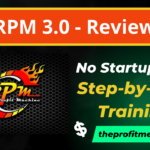The ever-evolving landscape of digital marketing demands that marketers stay ahead of the curve by harnessing the power of cutting-edge tools and technologies. In 2023, the following online tools have emerged as essential for marketers, helping them streamline their strategies, enhance their campaigns, and achieve better results. In this article, we’ll explore the top tools that are expected to make a significant impact on the marketing landscape this year.
Best Recommended and Proven Way to Make Money Online – Watch this FREE Video to START >>

1. Google Analytics: Comprehensive Data Analysis
Google Analytics is a staple for online marketers, and it incorporates AI features that provide deeper insights into website performance. AI-powered analytics can help identify user behavior trends, predict user conversions, and provide recommendations for optimizing marketing strategies. Marketers can uncover valuable data-driven insights and make informed decisions to improve their online campaigns.
2. HubSpot: All-in-One Marketing Suite
HubSpot remains a powerhouse in the world of digital marketing. It offers an all-in-one marketing suite that includes tools for email marketing, social media management, content creation, analytics, and customer relationship management (CRM). With its user-friendly interface and powerful automation features, HubSpot empowers marketers to create, track, and optimize their campaigns effectively.
3. SEMrush: Comprehensive SEO and Analytics
SEMrush is a versatile tool that provides a range of functionalities, including keyword research, competitor analysis, site audits, and backlink tracking. It offers insights into organic and paid search, enabling marketers to refine their SEO and SEM strategies. SEMrush also features content optimization recommendations and helps users stay updated with industry trends.
4. Canva: Visual Content Creation
Canva has become a go-to tool for marketers looking to create stunning visuals for their campaigns. It offers a wide range of templates for social media graphics, infographics, presentations, and more. Canva’s drag-and-drop interface, coupled with AI-powered design suggestions, makes it accessible and efficient for marketers of all skill levels.
5. Buffer: Social Media Management
Buffer simplifies social media management by allowing marketers to schedule, publish, and analyze their posts across multiple platforms from a single dashboard. It provides detailed analytics to track engagement and reach, helping marketers refine their social media strategies. Buffer also offers collaboration features for team-based social media management.
6. Chatfuel: Chatbot Development
Chatbots have become integral in online marketing, and Chatfuel is a top tool for building AI-powered chatbots. It caters to both beginners and experienced marketers, offering a user-friendly interface for creating chatbots without coding. Marketers can deploy chatbots on websites, Facebook Messenger, and other messaging platforms to engage with customers and gather leads.
7. Mailchimp: Email Marketing and Automation
Mailchimp is an email marketing platform that allows you to create and send email campaigns to your subscribers. It offers a variety of features, such as email templates, segmentation, and automation. Mailchimp also offers a free plan for up to 2,000 subscribers.
Best Recommended and Proven Way to Make Money Online – Watch this FREE Video to START >>
1. Google Analytics: Comprehensive Data Analysis
Google Analytics is a free web analytics service offered by Google that helps you track and analyze traffic to your website. It provides insights into who is visiting your website, what they are doing, and how they are finding you. This information can help you to improve your website’s performance, user experience, and overall digital strategy.
Here are five of the key benefits of using Google Analytics:
- Track your website traffic: Google Analytics provides comprehensive data on your website traffic, including the number of visitors, page views, and bounce rate. This information can help you to understand how well your website is performing and where you need to make improvements.
- Identify your target audience: Google Analytics provides insights into who is visiting your website, such as their demographics, interests, and how they are finding you. This information can help you to better understand your target audience and tailor your content and marketing campaigns accordingly.
- Measure the effectiveness of your marketing campaigns: Google Analytics can help you to measure the effectiveness of your marketing campaigns by tracking how many visitors they are driving to your website and what actions they are taking once they arrive. This information can help you to optimize your campaigns and allocate your marketing budget more effectively.
- Improve your website’s SEO: Google Analytics can help you to improve your website’s SEO by identifying which keywords are driving traffic to your site and which pages are performing well in search results. This information can help you to create more targeted and effective SEO campaigns.
- Make better business decisions: Google Analytics provides insights into how your website is performing and how it is impacting your business. This information can help you to make better business decisions, such as which products to focus on, which markets to target, and how to allocate your resources.
To get started with Google Analytics, you will need to create a Google account and add your website to Google Analytics. Once you have done this, you will be able to start tracking and analyzing your website traffic.
Here are some additional tips for using Google Analytics:
- Set up goals: Goals are specific actions that you want visitors to take on your website, such as signing up for your email list or making a purchase. Setting up goals in Google Analytics will allow you to track how many visitors are completing your goals and identify which pages are most effective at converting visitors into customers.
- Use segments: Segments allow you to group your website visitors together based on shared characteristics, such as demographics, interests, and behavior. This can help you to analyze different segments of your audience and identify trends and patterns.
- Create custom reports: Google Analytics offers a variety of pre-built reports, but you can also create custom reports to meet your specific needs. Custom reports can be used to track specific metrics, compare different data sets, and analyze trends over time.
Google Analytics is a powerful tool that can help you to improve your website’s performance and achieve your marketing goals. By taking the time to learn how to use Google Analytics effectively, you can gain valuable insights into your website traffic and improve your digital strategy as a whole.
2. HubSpot: All-in-One Marketing Suite
HubSpot is a comprehensive software platform that offers a range of tools and solutions for inbound marketing, sales, customer service, and CRM (Customer Relationship Management). Founded in 2006, HubSpot has become a leading provider of software for businesses and organizations of all sizes, helping them attract, engage, and delight their customers.
Here are some key components and features of HubSpot:
1. Marketing Hub:
HubSpot’s Marketing Hub includes tools for content management, email marketing, social media management, SEO (Search Engine Optimization), marketing automation, and analytics. It enables businesses to create and execute inbound marketing campaigns, attract leads, and nurture them through the sales funnel.
2. Sales Hub:
The Sales Hub provides tools for managing leads, automating sales processes, tracking customer interactions, and improving sales productivity. It includes features like contact and lead management, email tracking, sales automation, and reporting.
3. Service Hub:
HubSpot’s Service Hub is designed to help businesses provide excellent customer service and support. It includes features for ticketing, customer feedback, knowledge base creation, live chat, and more. Service Hub allows organizations to manage customer inquiries and issues efficiently.
4. CRM (Customer Relationship Management):
HubSpot offers a CRM system that integrates seamlessly with its marketing, sales, and service tools. The CRM allows businesses to centralize customer information, track interactions, and gain insights into customer behavior and preferences. It’s available for free, making it accessible to businesses of all sizes.
5. HubSpot CMS (Content Management System):
HubSpot’s CMS provides a user-friendly platform for website creation and management. It includes features for building and optimizing websites, blogging, and hosting content. The CMS is tightly integrated with HubSpot’s marketing and CRM tools.
6. Reporting and Analytics:
HubSpot offers robust reporting and analytics features across its various hubs. Users can measure the performance of marketing campaigns, track website traffic, monitor sales activities, and gain insights into customer behavior. Customizable dashboards and reporting tools help businesses make data-driven decisions.
HubSpot is known for its inbound marketing methodology, which emphasizes attracting and engaging customers through valuable content and personalized experiences. The platform’s user-friendly interface, automation capabilities, and integration with other popular tools make it a preferred choice for businesses looking to grow their online presence, generate leads, convert prospects into customers, and provide exceptional customer service. HubSpot’s scalability allows businesses to start small and expand their usage as their needs evolve.
3. SEMrush: Comprehensive SEO and Analytics
SEMrush is a powerful and versatile online marketing tool suite designed to assist businesses and digital marketers in optimizing their online presence, improving search engine rankings, and staying ahead of their competition. It offers a wide range of features and capabilities that make it an essential tool for SEO (Search Engine Optimization), content marketing, paid advertising, and competitive analysis. Here’s an overview of SEMrush:
1. Keyword Research:
SEMrush provides extensive keyword research tools, allowing users to discover high-value keywords related to their industry and niche. Users can find keyword ideas, analyze keyword difficulty, and track keyword rankings over time.
2. Competitive Analysis:
One of SEMrush’s standout features is its ability to analyze competitors’ websites. Users can gain insights into their competitors’ organic and paid search strategies, discover top-performing keywords, and identify potential opportunities to outperform rivals.
3. Site Audit:
SEMrush offers a comprehensive site audit tool that scans websites for technical SEO issues, broken links, and other on-page optimization problems. It provides recommendations for improving website health and search engine rankings.
4. Backlink Analysis:
Backlinks are crucial for SEO, and SEMrush allows users to monitor their backlink profile and analyze the backlink profiles of competitors. It provides insights into the quality and authority of backlinks, helping users identify areas for improvement.
5. Content Marketing:
SEMrush assists with content creation and optimization by offering content research tools. Users can find popular topics, analyze content performance, and discover opportunities for creating engaging and relevant content.
6. Advertising Analysis:
For paid advertising campaigns, SEMrush provides features for tracking competitors’ ad strategies, discovering new ad keywords, and optimizing ad spend. It supports both Google Ads and Bing Ads.
7. Social Media Management:
SEMrush has social media tools that allow users to schedule and manage social media posts across multiple platforms, track social media performance, and monitor brand mentions.
8. Reporting and Analytics:
SEMrush offers customizable reporting options that enable users to create detailed reports on various aspects of their online marketing efforts. These reports can be shared with clients or team members.
9. Market Research:
SEMrush provides market analysis tools that help users understand industry trends, target audiences, and market conditions. This information can be invaluable for making informed business decisions.
SEMrush is widely used by digital marketers, SEO professionals, content creators, and businesses of all sizes. It offers different subscription plans tailored to the needs of various users, from freelancers and small businesses to large enterprises. The platform’s comprehensive suite of tools makes it a valuable resource for improving online visibility, driving organic and paid traffic, and optimizing digital marketing strategies.
Best Recommended and Proven Way to Make Money Online – Watch this FREE Video to START >>
4. Canva: Visual Content Creation
Canva is a graphic design platform that allows users to create stunning visuals without any design experience. It offers a variety of templates and tools for creating social media graphics, presentations, infographics, and more. Canva also offers a free plan with limited features, but it’s a great option for small businesses and startups.
Here are five of the key benefits of using Canva:
- Easy to use: Canva is a user-friendly platform that is easy to learn and use. Even users with no design experience can create professional-looking visuals with Canva.
- Wide range of templates and tools: Canva offers a wide range of templates and tools for creating a variety of visuals, including social media graphics, presentations, infographics, and more. Users can also upload their own images and videos to use in their designs.
- Affordable: Canva offers a free plan with limited features, but it’s a great option for small businesses and startups. Paid plans start at just $12.99 per month and offer additional features such as unlimited templates, custom fonts, and team collaboration tools.
- Collaborative: Canva allows users to collaborate on designs in real time. This is a great feature for teams and businesses that need to create and share visuals quickly and easily.
- Mobile app: Canva is also available as a mobile app, so users can create and edit designs on the go.
Here are some additional tips for using Canva:
- Use the right template: Canva offers a wide range of templates for different types of visuals. Choose a template that is relevant to the type of visual you want to create.
- Use high-quality images: The quality of your images will have a big impact on the overall look of your design. Use high-quality images that are relevant to your topic and that have a good resolution.
- Use fonts consistently: Choose a font family and stick to it throughout your design. This will help to create a cohesive look.
- Use color effectively: Canva offers a variety of color tools to help you create a color palette for your design. Choose colors that complement each other and that are relevant to your topic.
- Keep your design simple: A cluttered design will be difficult to read and understand. Keep your design simple and focus on the most important elements.
Canva is a powerful tool that can help anyone create professional-looking visuals, regardless of their design experience. By following these tips, you can create stunning visuals that will help you to communicate your message effectively.
5. Buffer: Social Media Management
Buffer is a widely-used social media management platform that empowers individuals, businesses, and digital marketers to streamline their social media marketing efforts effectively. It offers a suite of tools and features designed to simplify the process of creating, scheduling, analyzing, and optimizing social media posts across various platforms. Here are some key points about Buffer:
1. Centralized Social Media Management:
Buffer allows users to manage multiple social media accounts from a single, user-friendly dashboard. This centralization simplifies the process of planning and executing social media marketing campaigns.
2. Scheduling and Publishing:
Users can schedule social media posts in advance, ensuring a consistent posting schedule across platforms. Buffer supports various social networks, including Facebook, Twitter, Instagram, LinkedIn, Pinterest, and more.
3. Content Calendar:
Buffer offers a content calendar view that allows users to visualize their posting schedule and adjust it as needed. This feature helps maintain an organized and coherent social media strategy.
4. Content Suggestions:
Buffer provides content suggestion tools that help users discover relevant and trending topics to share with their audience. This feature is valuable for content curation and staying up-to-date with industry trends.
5. Customizable Posting Schedule:
Users can create custom posting schedules for each social media account, taking into account the best times to reach their target audience. Buffer also provides data-driven suggestions for optimal posting times.
6. Analytics and Insights:
Buffer offers robust analytics and reporting features that provide insights into social media performance. Users can track key metrics, such as engagement, reach, clicks, and shares, to assess the effectiveness of their posts and campaigns.
7. Social Media Engagement:
Buffer enables users to engage with their audience directly through the platform. They can respond to comments, mentions, and direct messages, fostering better relationships with followers.
8. Team Collaboration:
For businesses and agencies, Buffer supports team collaboration with multiple user roles and permissions. Team members can collaborate on content creation, scheduling, and monitoring social media activity.
9. Integration:
Buffer integrates seamlessly with other popular marketing and productivity tools, such as Canva and Google Analytics. This integration streamlines workflows and enhances the overall marketing ecosystem.
10. Mobile App:
Buffer offers a mobile app that allows users to manage their social media accounts and schedule posts while on the go.
Buffer’s versatility and user-friendly interface have made it a go-to choice for social media management. Whether you’re a small business owner, a social media manager, or a digital marketer, Buffer can help you save time, increase engagement, and improve the overall effectiveness of your social media marketing efforts. It’s a valuable tool for maintaining a strong online presence and connecting with your target audience on social media platforms.
Best Recommended and Proven Way to Make Money Online – Watch this FREE Video to START >>
6. Chatfuel: Chatbot Development
Chatfuel is a no-code chatbot platform that allows businesses to create and deploy chatbots on Facebook Messenger, WhatsApp, and other messaging platforms. Chatbots can be used to automate customer service tasks, provide product information, and generate leads.
Here are five of the key benefits of using Chatfuel:
- No-code platform: Chatfuel is a no-code platform, which means that users do not need any coding experience to create and deploy chatbots. Chatfuel provides a variety of tools and templates that make it easy to create chatbots that are both powerful and easy to use.
- Wide range of features: Chatfuel offers a wide range of features for creating chatbots, including branching logic, conditional statements, and integrations with other business tools. This allows users to create chatbots that can handle a variety of tasks and that are tailored to their specific needs.
- Affordable: Chatfuel offers a free plan for up to 500 subscribers, but it’s also a great option for businesses with a larger subscriber base. Paid plans start at just $15 per month and offer additional features such as unlimited subscribers, team collaboration tools, and advanced analytics.
- Easy to use: Chatfuel is a user-friendly platform that is easy to learn and use. Even users with no chatbot experience can get started with Chatfuel quickly and easily.
- Powerful analytics: Chatfuel offers powerful analytics that allow users to track the performance of their chatbots. This information can help users to identify what is working well and to make improvements to their chatbots.
Here are some additional tips for using Chatfuel:
- Start with a clear goal: What do you want your chatbot to achieve? Once you have a clear goal in mind, you can start to design your chatbot’s conversation flow.
- Keep your conversations natural: Chatbots should not sound like robots. Use natural language and avoid using jargon.
- Test your chatbot thoroughly: Before deploying your chatbot, be sure to test it thoroughly to make sure that it is working as expected.
- Monitor your chatbot’s performance: Once your chatbot is deployed, be sure to monitor its performance and make adjustments as needed.
Chatfuel is a powerful tool that can help businesses to automate their customer service, provide product information, and generate leads. By following these tips, you can get the most out of Chatfuel and improve your business results.
7. Mailchimp: Email Marketing and Automation
Mailchimp is a leading email marketing platform that empowers marketers to create, send, and analyze email campaigns with ease. It offers a range of features that make it a valuable tool for marketers in 2023:
– Email Campaigns:
Marketers can design and send visually appealing email campaigns, including newsletters, product announcements, and promotional offers. Mailchimp’s drag-and-drop editor allows for the creation of professional-looking emails without any coding knowledge.
– Automation:
Mailchimp’s automation features enable marketers to set up email sequences based on user behavior and triggers. Automation can be used for onboarding sequences, abandoned cart recovery, drip campaigns, and more, ensuring timely and relevant communication with subscribers.
– Segmentation:
Marketers can segment their email lists based on various criteria, such as demographics, purchase history, and engagement levels. This allows for highly targeted and personalized email campaigns that resonate with different audience segments.
– Analytics:
Mailchimp provides in-depth analytics and reporting tools to track the performance of email campaigns. Marketers can measure open rates, click-through rates, conversion rates, and more. These insights help in refining email content and strategy for better results.
– A/B Testing:
Marketers can conduct A/B tests to compare different email elements like subject lines, content, and send times. This data-driven approach helps identify what works best and optimize future campaigns.
– Integration:
Mailchimp integrates seamlessly with various other marketing tools and platforms, such as e-commerce platforms, CRM systems, and social media. This facilitates data syncing and a cohesive marketing ecosystem.
In 2023, Mailchimp continues to be a trusted solution for email marketing and automation. It offers marketers the tools they need to build and nurture relationships with their subscribers, drive engagement, and achieve their marketing objectives. Whether you’re a small business owner or a marketing professional, Mailchimp is a versatile and user-friendly platform that can enhance your email marketing efforts.
Best Recommended and Proven Way to Make Money Online – Watch this FREE Video to START >>
Conclusion:
As marketing continues to evolve, the best online tools for marketers in 2023 empower professionals to work smarter and achieve better results. HubSpot, SEMrush, Canva, Buffer, and Chatfuel are just a few examples of the tools that will play a significant role in shaping successful marketing campaigns in the coming year.
These tools offer a range of functionalities, from automation and analytics to visual content creation and chatbot development. By incorporating these tools into their marketing toolkit, marketers can streamline their workflows, make data-driven decisions, and enhance their overall effectiveness. Staying up-to-date with these tools is crucial for marketers who aim to stay competitive and deliver exceptional results in an ever-evolving digital landscape.











